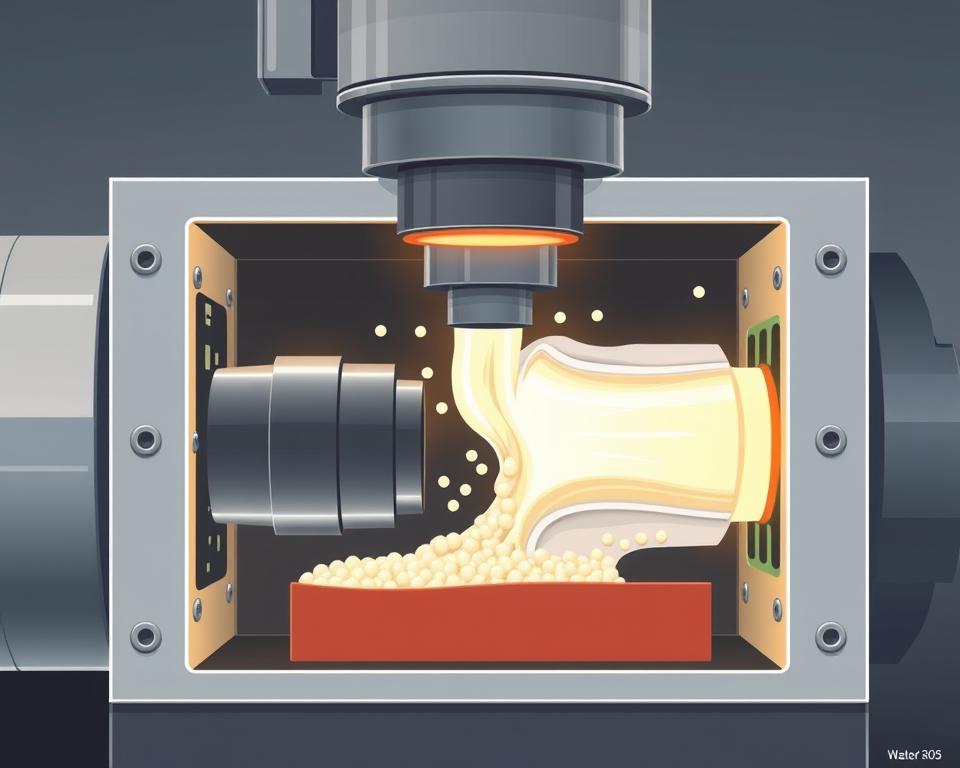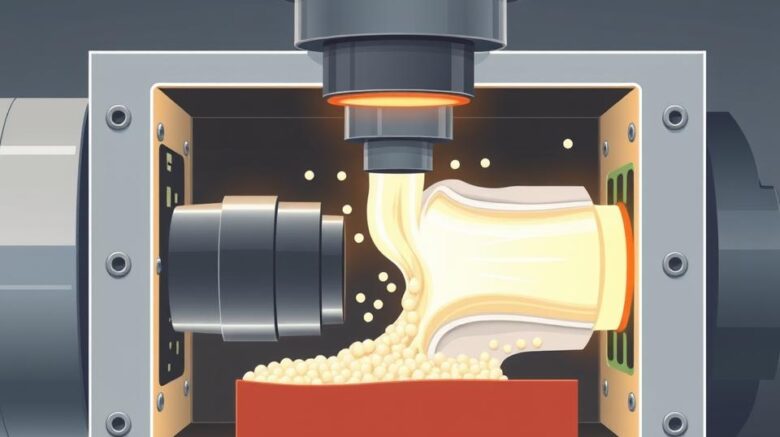Step‑by‑Step Guide to Sourcing Injection Molding in China
So, the big meeting just wrapped up. your new product is a go, the schedule is tight, and the budget is… well, let’s just say it’s tight.. And suddenly someone—perhaps your superior or the finance head—says the fateful words that make any project manager’s heart skip a beat: “We should look at sourcing this from China.”
Naturally, you agree. It makes sense on paper. Savings can be substantial. Yet your thoughts are already spinning. You’ve heard the stories, haven’t you? Quality failures, endless communication gaps, shipments arriving months late and nothing like the prototype. It can feel like you’re being asked to walk a tightrope between landing a huge cost win for the company and steering your project straight into a ditch.
However, here’s the reality. Sourcing plastic mold doesn’t have to be a gamble. It’s no different from any structured project. And its outcome hinges on the approach you take. It isn’t about the cheapest offer but about choosing the right supplier and running the process transparently. Ignore the nightmare anecdotes. Let’s go through a step-by-step guide to succeed.

Step One: Do Your Homework
Before you mention “supplier” or browse Alibaba, organize your internal data. Honestly, more than half of all overseas manufacturing problems start right here, with a weak or incomplete information package. Don’t assume a remote factory can guess your needs. Sending a vague request is like asking a builder to quote you for “a house.” The replies will range from absurdly low to exorbitant, none of which help.
Your RFQ should be bulletproof—clear, detailed, and unambiguous. It’s the cornerstone of your entire effort.
What should you include?
First, your 3D CAD files. These are non-negotiable. Stick to universal formats like STEP or IGS to avoid any compatibility headaches. This is the master blueprint for your part’s geometry.
However, 3D alone won’t cut it. You also need detailed 2D drawings. This is where you call out the stuff that a 3D model can’t communicate. I’m talking about critical tolerances (like ‘25.00±0.05 mm’), material specifications, required surface finishes, and notes on which features are absolutely critical to function. Any seal surfaces or critical hole sizes must be clearly labeled.
Then specify the material. Don’t label it simply “Plastic.” Even “ABS” alone is too vague. Be specific. Call out SABIC Cycolac MG38 (black), for example. What’s the reason? Because plastic grades vary by the thousands. Defining the exact material guarantees the performance and appearance you designed with plastic mold injection.
They can offer alternatives, but you must provide the initial spec.
Lastly, add your business data. What’s your forecasted annual volume (EAU)? A supplier needs to know if they’re quoting a tool that will make 1,000 parts in its lifetime or 1,000,000 parts a year. Tool style, cavity count, and unit cost are volume-driven.
Hunting for the Best Supplier
With your RFQ perfected, now, who do you send it to? The web is vast but overwhelming. Locating vendors is easy; vetting them is the real challenge.
Your search will likely start on platforms like Alibaba or Made-in-China.com. They offer breadth but not depth. Treat them as initial research tools, not final solutions. Aim for a preliminary list of 10–15 potential partners.
But don’t stop there. Think about engaging a sourcing agent. True, they charge a fee. But a reputable agent brings pre-screened factories. They handle local liaison and oversight. As a newcomer, this offers priceless security. Consider it timeline insurance.
Also consider trade fairs. With budget permitting, Chinaplas or similar shows are invaluable. Meeting onsite is unbeatable. Hold samples, talk shop, and gauge professionalism firsthand. Also, leverage the tried-and-true referral network. Consult trusted colleagues. A solid referral can be more valuable than any ad.
Sorting the Contenders from the Pretenders
Now you have your long list of potential suppliers and you’ve sent out your beautiful RFQ package. estimates roll in. Some prices will undercut logic, others will shock you. Your task is to filter them down to 2–3 credible finalists.
How to proceed? It involves both metrics and gut feel.
Step one: audit communication. Are their replies prompt and clear? Can they handle detailed English exchanges? But the key: do they probe your RFQ? Top vendors will critique and inquire. “Have you considered adding a draft angle here to improve ejection?” or “We see your tolerance requirement here; our CMM can verify that, but it will add to the inspection time. Is that acceptable?” Consider that a big green light. You know they know their stuff. Anyone who simply agrees to all specs is a red flag.
Then confirm their machinery specs. Ask for a list of their equipment. Review examples of parts akin to your design. A small-gear shop won’t cut it for a big housing.
Then comes the audit. This is not optional. Just as you interview hires, audit suppliers. Either visit in person or engage a local audit service. They’ll send a local inspector to the factory for a day. They will verify the company is real, check their quality certifications like ISO 9001, assess the condition of their machinery, and get a general feel for the operation. It’s the best few hundred dollars you will ever spend on your project.
Converting Digital Designs into Molded Parts
Once you’ve chosen your supplier. you agree on 50% deposit to start toolmaking and 50% balance after sample sign-off. Now the real fun begins.
The first thing you should get back after sending your payment is a DFM report. DFM means Design for Manufacturability. It’s their professional review of your CAD. They’ll flag thick sections prone to sink, sharp edges that stress, or insufficient draft. A thorough DFM is a sign of a professional operation. It’s a two-way partnership. You iterate with their team to optimize the mold.
When you greenlight the DFM, they machine the mold. In a few weeks, you’ll see “T1 samples are on the way.” These are your initial mold shots. They are your moment of truth.
Be prepared: T1 samples are almost never perfect. That’s standard process. Look for small flaws, slight size errors, or surface marks. You’ll provide detailed feedback, they’ll make small adjustments (or “tweaks”) to the tool, and then they’ll send you T2 plastic mold company samples. It could require several iterations. The key for you, as the project manager, is to have this iteration loop built into your timeline from the start.
Eventually, you will receive a part that is perfect. It matches all specs, has a pristine finish, and works as required. This becomes the “golden sample.” You formally approve it, and this sample is now the standard against which all future mass-produced parts will be judged.
Final Steps to Mass Production
Landing the golden sample is huge, yet the project continues. Now comes full-scale production. How do you ensure that the 10,000th part is just as good as the golden sample?
Implement a robust QC plan. This often involves a pre-shipment inspection. Bring in an external QC firm. They’ll randomly select parts, compare them to specs and golden sample, and deliver a detailed report. They provide a photo-filled inspection report. Only after you approve this report do you authorize the shipment and send the final payment. This audit shields you from mass defects.
Lastly, plan logistics. Clarify your Incoterms. Does FOB apply, passing risk at the ship’s rail? Or is it EXW (Ex Works), where you are responsible for picking it up from their factory door? These choices hugely affect landed cost.
China sourcing is a long-haul effort. It hinges on strong supplier relations. Treat them like a partner, not just a line item on a spreadsheet. Transparent dialogue, respect, and process discipline win. It’s a challenging project, no doubt. However, armed with this guide, you’ll secure savings and keep high standards intact. You’re set to succeed.
